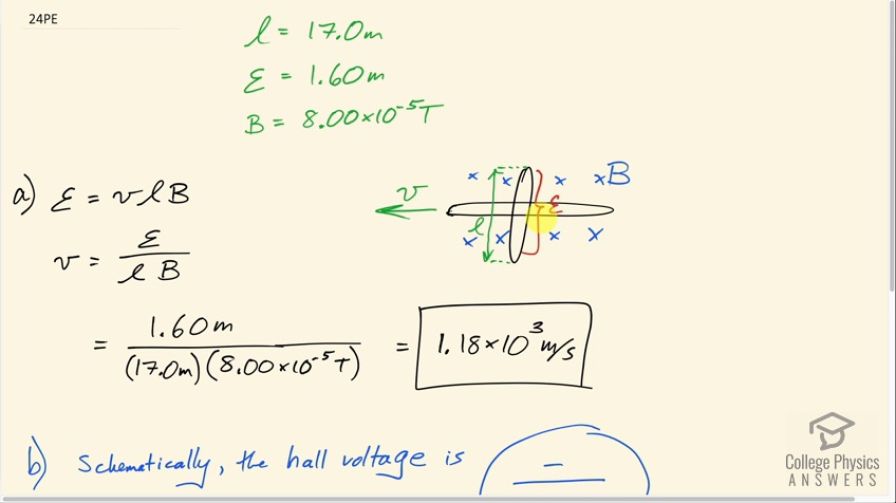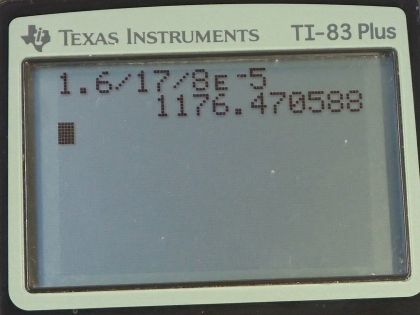Question
(a) What is the speed of a supersonic aircraft with a 17.0-m wingspan, if it experiences a 1.60-V Hall voltage between its wing tips when in level flight over the north magnetic pole, where the Earth’s field strength is
? (b) Explain why very little current flows as a result of this Hall voltage.
Final Answer
- This is an incomplete circuit. There is no where for the current to flow.
Solution video
OpenStax College Physics for AP® Courses, Chapter 22, Problem 24 (Problems & Exercises)

vote with a rating of
votes with an average rating of
.
Calculator Screenshots
Video Transcript
This is College Physics Answers with Shaun Dychko. We are told that this really fast, supersonic aircraft is flying level over the North magnetic pole so that's a clue that the flight velocity is perpendicular to the magnetic field lines because magnetic field lines go directly into the pole nearly and that's a level flight and so it's going to be moving parallel to the ground and so we have velocity is parallel to the magnetic field. The wing span is 17.0 meters and there's a whole voltage of 1.60 meters between these wing tips and we are told this magnetic field strength there and our question is what is the speed of the aircraft? So the Hall voltage then is this speed times the length of the wings multiplied by the magnetic field strength and we don't need to put any trigonometric function here because it's already perpendicular so we don't need a sin Θ there you can put sin of 90 if you would like and that would be 1 and you can solve for v by dividing both sides by l times B and so the speed then is the Hall voltage divided by the length of the wing span multiplied by the magnetic field strength. That's 1.60 meters divided by 17.0 meters or that's 1.60 volts I should say divided by 17.0 meters times 8.00 times 10 to the minus 5 tesla which is 1.18 times 10 to the 3 meters per second. Now question (b) asks how come very little current flows as a result of this whole voltage? Well, the schematic of this situation is just these two parallel lines with one longer than the other— this is the symbol for a battery, a potential difference, in other words— and there's no other wires involved here, this is an incomplete circuit and so there's nowhere for the current to flow and there we go!
